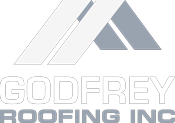Higher Learning: Green Roofs with a Mission
Green roofs offer quite an array of possibilities. For example there is escape – escape from down below to quiet havens from street-side hustle and bustle. As a child, I’ll reluctantly admit, a roof sometimes provided temporary avoidance of family duties. My special roof was only slightly green with a fine patina of moss. Nevertheless once up and equipped with a good book one could delay doing the dishes, for example – even though they would still be there when I came down to earth. Not so re: cows. Leniency did not apply at milking time. No tacit bargains there. Do it – NOW!
My mossy green roof was less inclined than the roof of our barn which was covered with sod. Still the more steeply pitched barn roof would have done as second choice. There were also tops of haystacks that we were never to violate??? It can be very intoxicating to be on top of things. You feel such power! But now to the power of Google where I revived my study of high level escapes. The green roofs of today are astonishing. There are architectural horticultural masterpieces adorning roof tops of expensive condos and hotels. Sometimes whole parks rest on the roofs of the world’s extremely wealthy nations. More modest, more utilitarian versions can be seen on public buildings across our continent. Simpler applications are evident too. It is still possible in remote parts of northern Europe to find goats feeding on pastures on the roof.
Whether built for aesthetic, economic or idealistic reasons green roofs are structures from the past that are now being adapted to fit the present and the future. Green roofs are going up in Ottawa too. One project in particular has caught my attention and that is the work in progress at Ashbury College. If there are “perfect storms” then there are “perfect projects”. This project combines the aesthetic, the economic and the idealistic.
There are basically two kinds of green roofs – extensive and intensive. The extensive type is the kind that you and I might self-install but, if professionally built, can be as large or even larger than the one constructed at Ashbury College. An extensive roof can handle up to a 45 degree incline and will support growth medium 9 to 15 cm. in thickness. Only low-growing, tough little plants prosper in this setting. The sedums, for example, are versatile succulents able to get along without much water or general care.
Intensive roofs are suitable for large buildings such as hospitals, government buildings and hotels. They are more versatile as to structure and plant material and are built to support more soil and heavier plants – even small trees. Structural engineers should always be consulted before attempting any green roof project.
Ashbury’s plan is to integrate all aspects of the project into the school curriculum with full participation by students in using and managing 3800 square feet of outdoor classroom. This learning space is occupied by gardens anchored to a central deck where students can read, discuss and receive instruction. There are four planting sections, one for each of indigenous grasses, native herbs, native flowers, and vegetables. Food grown here will be used in the Ashbury kitchen and/or donated to charitable organizations.
Initial research was done by Ashbury representatives working with roof consultants and suppliers. Specifications were put together based on Ashbury plans and needs. The contract for the next phase was awarded to Godfrey Roofing Inc. who then removed the existing roof system, replacing it with a two ply mod bit roof system. This system was then flood tested to ensure 100% waterproofing. A “sandwich” consisting of insulation, drainage board and root barrier came next and finally aluminum edging was installed to separate growing space from stone and walkways. Growth medium is slated for installation at the same time as the central deck structure. The project should be complete by late summer. All construction materials have been obtained in Ottawa. Generally an extensive green roof will cost between seven to ten dollars per square foot, an intensive roof – fifteen to twenty dollars per square foot.
Godfrey believes that installations will become more popular as lack of urban green space becomes a larger issue. Green roofs provide attractive environments and are bonuses for the workplace or for residences. They also make room for small vegetable gardens. As awareness of their environmental benefits increases their construction will in greater demand.
Economic and aesthetic factors are almost always intertwined. There are substantial savings in the cost of heating and cooling buildings that boast green roofs – savings as much as 50%. Green roofs lengthen the life span of the structural underlay that supports them by as much as two fold. Longer lasting roofs reduce the amount of rubble going into landfill. Each green roof that goes up helps to reduce urban heat island effect – a climate condition that is potentially life threatening. Green roofs improve air quality, and reduce storm run-off by absorbing precipitation.
The students at Ashbury will soon open an exciting door to a new kind of learning, one that is an attractive alternative to confinement in sometimes stuffy classrooms with some of the more traditional forms of education. While its students enjoy their lofty pursuits, Ashbury will begin to reap the economic benefits that come with green roofs. There are a lot of Ottawa Schools with flat roofs and the former Ottawa Board of Education once had a Science Farm. Ashbury now has a miniature Science Farm on its roof. No bussing required. This is a significant achievement on the part of its builders and planners.
Author: Edythe Falconer
To discuss the green roofing solutions provided by Godfrey Roofing Inc, please request a free no-obligation estimate or visit the Ottawa green roofing section for more detailed information.





